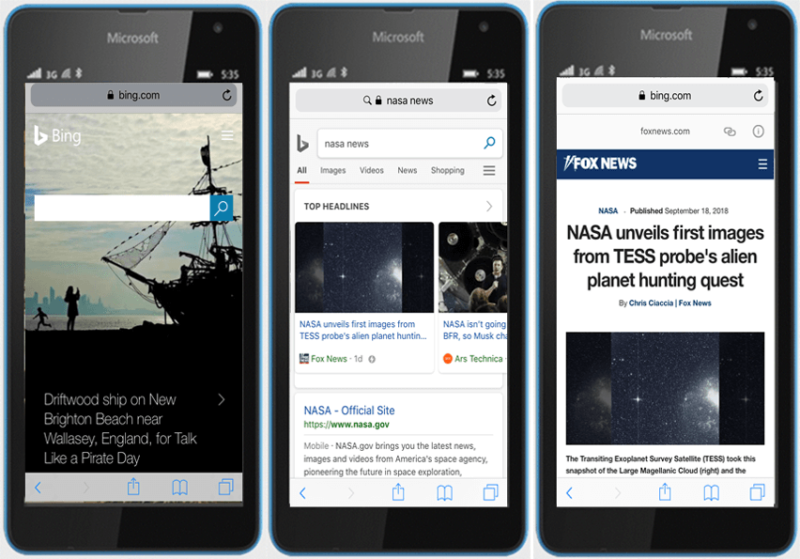
Bing announced Monday the release of the Bing AMP (Accelerated Mobile Pages) viewer. With the release, Bing mobile searchers will be able to access AMP-enabled pages from the search results.
AMP viewer and AMP carousel rolling out globally. AMP pages are now available in the news carousel in the US and will be rolling out to other countries in the coming months. It will also become available for more links in Bing search results and to more websites, beyond news.
The screen shots above show the “top headlines” section with AMP stories — indicated by the lightning bolt icon — in the AMP carousel. Clicking on any of those stories will load the articles in the AMP viewer.
Google, which has been the driving force behind the open-source AMP Project until this week, began showing AMP-enabled stories in its search news carousel about two years ago.
Bing joined the AMP Project in 2016. In June, the company said its AMP viewer would be available this summer.
How does this impact Bing users? News results may load faster on mobile. For publishers, this may be an added incentive to enable AMP content and have stories load quickly from Bing search. Bing makes no mention of how AMP might impact ranking. Google has said AMP does not directly impact a page’s rank in search but reserves certain sections of its search results to show only AMP content.
Advice for webmasters from Bing. Bing wrote, “The AMP protocol offers the ability to cache and serve cached copied AMP content that is published on the web, providing faster user experiences on Bing. In order to enable your AMP published content within Bing, you need to allow the Bingbot (our crawler) to fetch AMP content and allow cross-origin resource sharing (CORS) for bing-amp.com domain. Most AMP enabled sites and advertisers have already authorized the CORS sharing for the ampproject.org domain, but now need to also bing-amp.com to the allowed list.”



